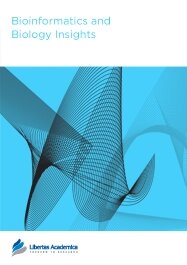

Publication Date: 02 Dec 2013
Type: Original Research
Journal: Bioinformatics and Biology Insights
Citation: Bioinformatics and Biology Insights 2013:7 369-373
doi: 10.4137/BBI.S12276

CD36 is an integral membrane protein which is thought to have a hairpin-like structure with alpha-helices at the C and N terminals projecting through the membrane as well as a larger extracellular loop. This receptor interacts with a number of ligands including oxidized low density lipoprotein and long chain fatty acids (LCFAs). It is also implicated in lipid metabolism and heart diseases. It is therefore important to determine the 3D structure of the CD36 site involved in lipid binding. In this study, we predict the 3D structure of the fatty acid (FA) binding site [127–279 aa] of the CD36 receptor based on homology modeling with X-ray structure of Human Muscle Fatty Acid Binding Protein (PDB code: 1HMT). Qualitative and quantitative analysis of the resulting model suggests that this model was reliable and stable, taking in consideration over 97.8% of the residues in the most favored regions as well as the significant overall quality factor. Protein analysis, which relied on the secondary structure prediction of the target sequence and the comparison of 1HMT and CD36 [127–279 aa] secondary structures, led to the determination of the amino acid sequence consensus. These results also led to the identification of the functional sites on CD36 and revealed the presence of residues which may play a major role during ligand-protein interactions.
PDF (1.87 MB PDF FORMAT)
RIS citation (ENDNOTE, REFERENCE MANAGER, PROCITE, REFWORKS)
BibTex citation (BIBDESK, LATEX)
XML
PMC HTML

Bioinformatics and Biology Insights fills a gap in current journals. Ever more often, bioinformatics and detailed analysis of data creates novel, unexpected insights. It is good to have a journal which focusses on exactly this aspect of bioinformatics research, putting the biology insights upfront with high respect for the different methods in bioinformatics.
Facebook Google+ Twitter
Pinterest Tumblr YouTube